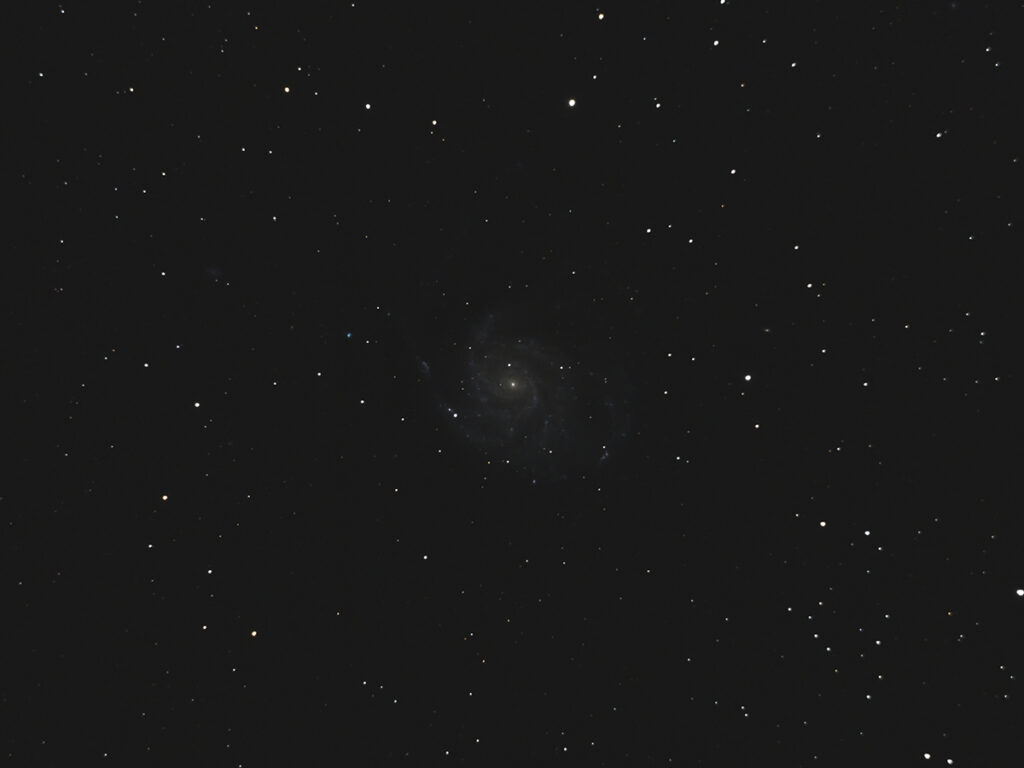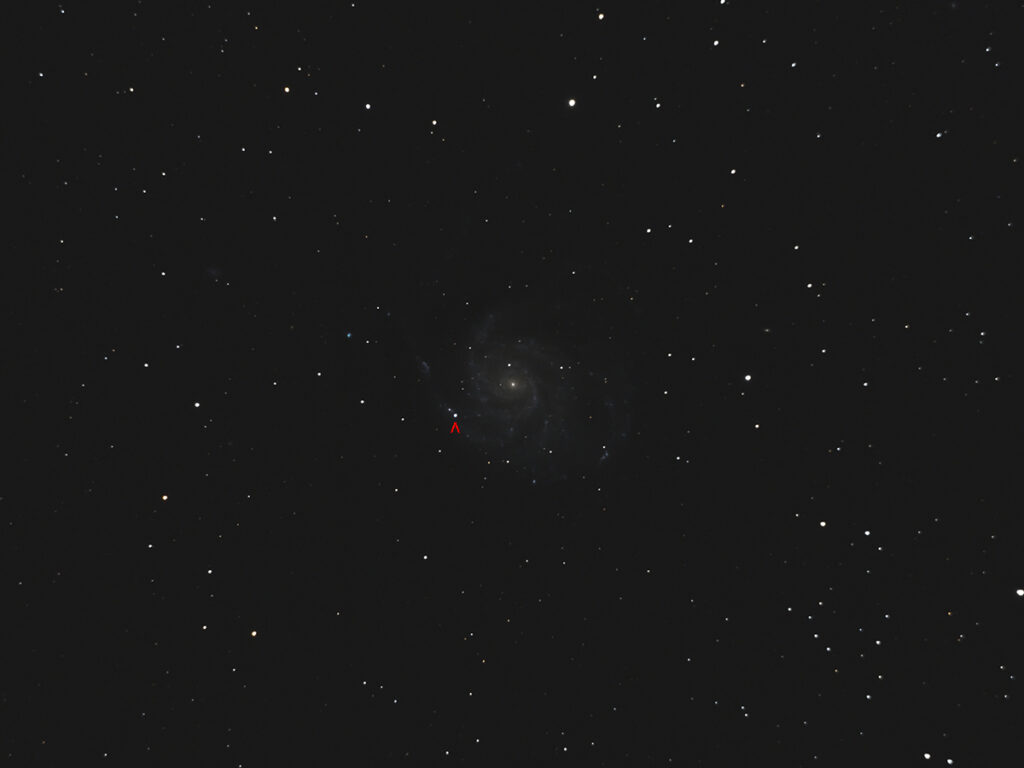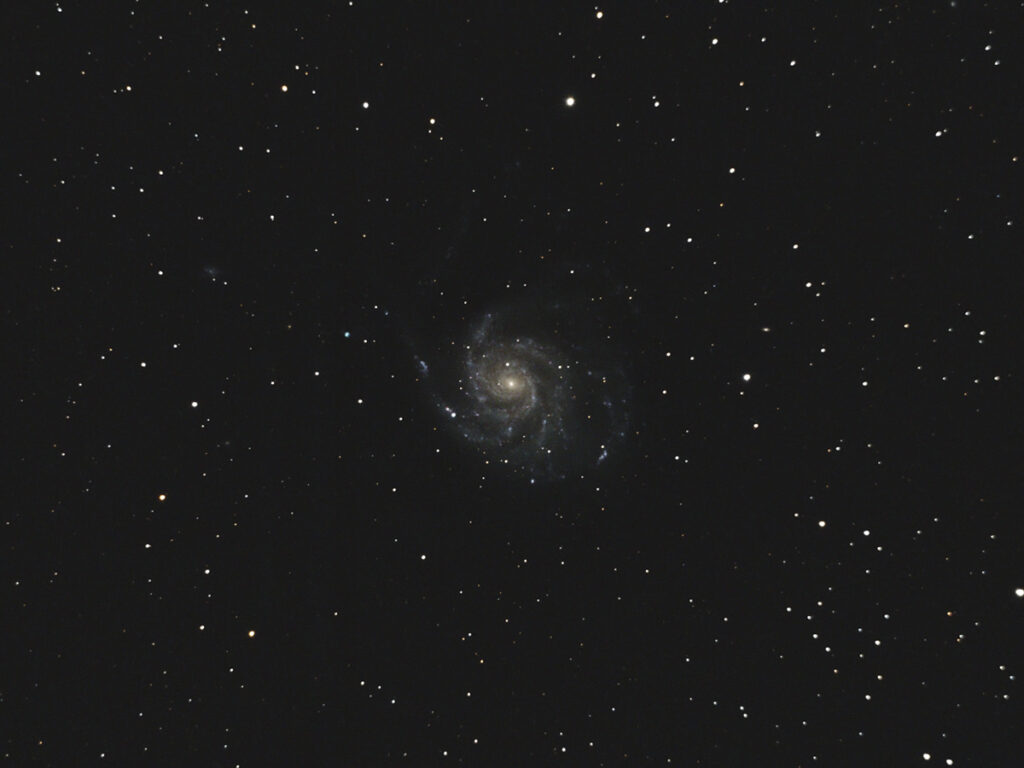
Telescope: Meade SN10 at f/4, Orion Atlas EQ-G
Camera: QHY 268c, Mode 0, Gain 30, Offset 30, 0C
Filter: GSO IR Blocking Filter
Guide scope: Williams Optics 50mm, ASI290MM mini, PHD
Exposure: 11x300sec, saved as FITS
Darks: 32×300 sec
Flats: 64×0.1 sec, tee shirt flats taken at dusk
Average Light Pollution: Red zone, fair transparency
Lensed Sky Quality Meter: 18.5 mag/arc-sec^2
Stacking: Mean with a 1-sigma clip.
White Balance: Nebulosity Automatic
Software: SharpCap Pro, Nebulosity, Deep Sky Stacker, Photoshop
Supernova 2023ixf in M101 is a type II supernova, the result the core collapse of a massive star. The supernova was discovered on May 19th while it was at magnitude 14.9. It quickly brightened to magnitude 11, which is where it is at now and within easy reach of modest size telescopes. Over the next few weeks and months it will slowly fade from sight.
Note that this is a photometric image, meaning that is has been processed to preserve the relative brightness of the stars and galaxy, so this is what the field would look like through a large telescope under a dark sky. The supernova is in the outer arm to the lower left of the core and a little bit brighter than the core. This shows how this single star is brighter than all of the billions of stars that make up the host galaxy and is even brighter than the million of stars that are crowded around the galaxy’s core. Also consider that all of the other stars in the field are in our own galaxy and none of these are more than a few thousand light years away. Note that M101 lies above the galactic plane and when we are looking in this direction intergalactic space is only a few thousand light years away, so none of the stars in this field can be farther away than that. The supernova is comparable to many of these local stars and is brighter than many of them, yet the host galaxy is 27 million light years away! That almost 10,000 times farther away that the local stars, yet is appears to be of comparable brightness!

The same image with the location of the supernova marked.

The same image, this time processed as a more conventional deepsky image to bring up the faint details. It does hep show the beautiful color and structure of the galaxy, but you can see how it suppresses the relative brightness of the supernova.
Neat stuff.
M101 is currently high overhead as the sky darkens.
Recent Comments